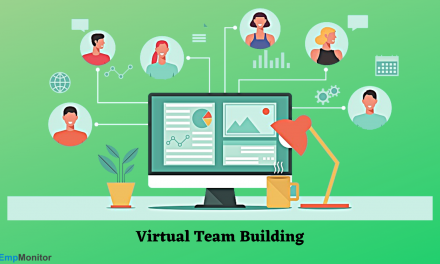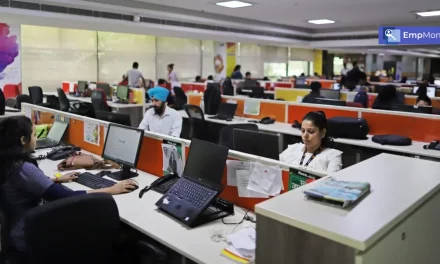There has never been a higher need for effective Virtual team building activities and collaboration due to the lack of suppression of a climate disaster and the additional stress of a coronavirus pandemic and other endemics.
The human touch is essential in our profession and our lives. Also, with our extensive experience with remote work, we’ve discovered how important and valuable team building activities are for fostering trust, compassion, and harmony across a distant team. But the issue remains: is it possible to replicate what occurs in face-to-face discussions in virtual meetings? How can we foster in-depth dialogues and connections online?
There are clear economic and environmental benefits to not holding virtual team building activities for work. We chose to test it with our Employee monitoring software, which positively impacts many organizations. We also learned valuable insights that may aid other organizations and movements that may unexpectedly find themselves needing free virtual team building activities.
Creating a work team was one of the first stages in the preparation of the virtual team building activities. Members of the working team gathered regularly in a communal brainstorming space, bringing various perspectives for developing our plan. The functional team set specific objectives: strategic conversations and integrity were among our top priorities.
Why Are Virtual Team Building Activities Important?
We understand that being productive as a team also necessitates good teamwork. This is especially crucial since we work remotely and originate from various cultures, and we interact through text, which may be easily misread or misunderstood.
So we were pretty clear from the start that we wanted the full diversity of our team to show up, that we wished to hear voices other than the normal ones, and that we intended to boost everyone’s involvement and engagement.
It is essential to our session planning and design: for example, the virtual team building games activities schedule was developed with employee involvement, and we engaged the whole team on major logistical issues (i.e. format, timing).
To address the issue that not everyone feels competent or comfortable facilitating, we formed facilitation small groups of three or four individuals and urged them to share the work of preparing slides and materials, taking notes, holding the space, and whatever else was required.
We also made sure that each small group included one team member from the general retreat working group so that we could stay on track with the overarching schedule and minimize duplication of session forms.
We centralized logistics because it’s nearly impossible to handle streamlining and technical aspects of a virtual meeting at the same time (e.g., creating breakout groups in Zoom, recording the sessions, and creating live polls of participants), so we asked one colleague to take the lead on this throughout the week.
We also prepared a logistical guide version of the agenda that specified who was guiding each session, which slides they were using, how much time was required, and so on — this was useful in keeping everyone informed and on the same page. It served as our road map!
As much as feasible, simulate an in-person retreat.
One of the most important components of a retreat is stopping everyday business tasks so that a team may be together and concentrate on the meeting’s goals. It is one of the many fun team meeting ideas that helps your team bond together and work together to achieve a centralized goal. Everyone was urged to be online just during meeting hours and to notify their coworkers that they would be unable to do routine tasks during this period. We agreed as a team to do a fun online retreat in one weekend in a month, rather than spreading it out over many weeks, to emulate an in-person retreat.
Given our team’s geographical dispersion and the fact that we span timezones ranging from Fiji to Toronto, determining our timings was a big difficulty. However, keeping our promise to be as inclusive as possible was critical.
To attempt to mitigate the effects of being online at atypical hours, we advised all team members to prioritize other work for that week and to shut our online communication channels (i.e. Slack and email) so they could completely concentrate on the meetings and rest otherwise.
Knowing that people’s ability to remain attentive in front of a computer screen declines with time, defining the appropriate length of time for our online team retreat was critical. So we prepared similarly to a typical face-to-face event but adjusted for the number of hours. We took one 30-minute break, which was critical not just for maintaining energy levels but also for allowing individuals to consume snacks, lunch, or supper at separate times.
We made limited money accessible for refreshments, and we constructed informal online rooms for the breaks so that individuals could have a coffee or sit together by someone’s window, freely conversing. These moments are extremely significant in person, aren’t they? It’s generally when you learn about someone’s interests, chat about a side project, realize you both enjoy the same cuisine… We chuckled with a colleague who was telling us about how they cooked cookies to attempt to appease the neighbors after a party they had hosted – badly.
Strike a balance between team development and strategic planning.
Getting clarity on work priorities is one of the key aims of team retreats, and it was something we were working hard on. Even though we were trying to be impartial, having everyone familiar with each other was critical. These objectives do not need to be separated, and they will be useful for having meaningful talks.
Throughout the retreat, we spent at least half of our time together having fun, getting to know each other better, and discussing our team culture. And this was very much appreciated since we spend so little time together in our daily job routine.
We went on a treasure quest for some crucial information about our business and the resources we utilize daily. We interviewed and sketched each other in pairs, with the bigger group guessing who our companion was. We created a thought cloud of the most popular terms we identify with our Theory of Change by playing bingo on it. We also played an online game on team building activities virtually.
As an introduction to some of the important themes on the table, several of these entertaining games also lay the foundation for the strategic and more in-depth talks we had. They were also helpful in maintaining focus and energy during more serious occasions.
Even for more formal meetings, don’t always use the obvious.ppt presentation. If we are not in person, it may be tough to conceive how to utilize the conventional design methods, but the fact is that there are so many possibilities online these days! It is critical to vary the design of your sessions so that people do not get bored.
Prepare well, but make room for the unexpected.
Plan B can only be implemented if Plan A is in place. Careful preparation takes time, but it is critical to the success of your retreat. The sessions throughout the day and the entire retreat should seem like a tale of a journey from one location to another: a map is required.
We went through four drafts of our agenda before we were happy, and we spent about a month fleshing it out in our weekly meetings. This entailed revisiting the survey data, brainstorming in the working group, reviewing training resources, receiving mentoring from our Training team, and, well, thinking outside the box!
Because we were distributing facilitating across the whole team, it was critical to have a well-structured agenda with defined objectives and proposed session formats to assist individuals with less facilitation expertise in ensuring goal congruence and variety of designs. We also provided everyone with a summary of the whole itinerary so they could see their sessions in perspective.
The facilitation small groups were allowed to vary the forms we suggested as long as they stayed on track with the aims. Members of the main working group were responsible for ensuring that everyone was on the same page in each facilitation small group.
We were also extremely purposeful in forming small groups that included a diverse range of people based on several characteristics (i.e. area of expertise, position, time in the organization, gender, location of based), to facilitate integration and make the most of our delicious diversity.
One of the sessions that received a lot of favorable responses was one in which we looked at intersectionality concerning our identities and how it affects our job. The facilitators advocated adding a room for small breakout groups to discuss, and the outcome was incredible – nobody wanted to stop talking! We took a brief poll to choose what to do and collectively opted to go overtime to remain longer on that topic.
One piece of advice I would provide is to take the temperature at the end of each day and assess how the meeting is going: how is everyone feeling? Are there major issues arising? Is there anything else we should look into? Prepare to adjust your plans if necessary.
Must Read
Significant Challenges To DIscuss Before Working With A Virtual Team
Want To Prioritize Remote Team Building Activities? Consider The Latest Virtual Team Challenges
The Paradox Of Virtual Team Building Activities In the Workplace
Seek assistance
I’ll be completely honest. I’d never planned a retreat before, either in person or online. And I was first skeptical: could online retreats truly work? Is it true that I am the ideal person to oversee this project?
So, I didn’t do it alone. Our meeting was amazing because we all took ownership of it! We had a fantastic working group to set the agenda and plan the logistics, and the coaching of our Trainings team was critical in providing us with assistance throughout the process.
Collaboration is essential in almost everything we do, and planning free virtual team building activities is no exception. After all, each retreat is a unique gathering with unique aims and requirements — and, of course, unique persons. It’s hardly rocket science, and the best advice is usually to seek for support, listen to your team, and experiment!
















